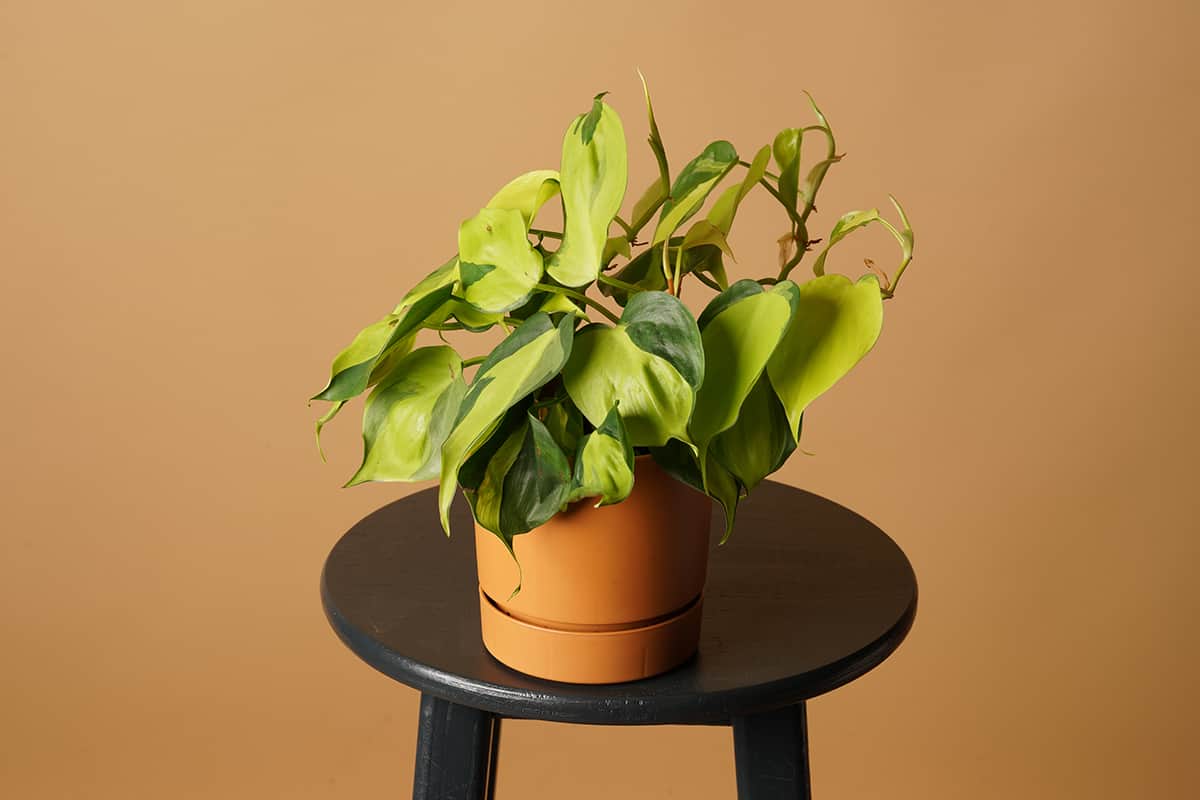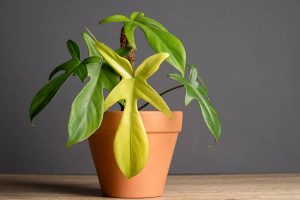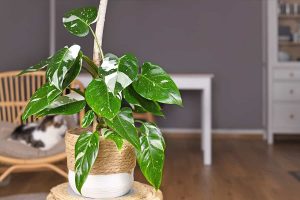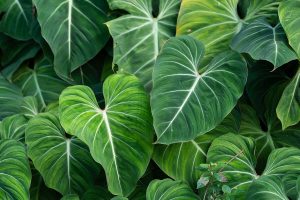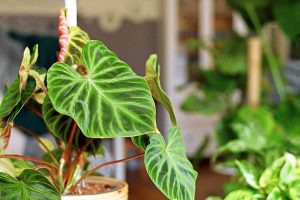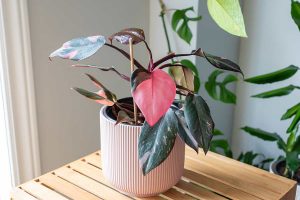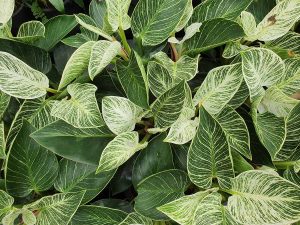The Philodendron Cordatum is a rare plant that is commonly mistaken for other types of Philodendrons. It has heavily veined heart-shaped leaves and grows along the rainforest floor in distinct areas of Brazil.
| Botanical name | Philodendron Cordatum |
| Common names | Philodendron Angra dos Reis, Heart Leaf Philodendron |
| Plant family | Araceae |
| USDA hardiness zone | 9- 12 |
| Mature height | 2 feet |
| Mature spread | 10 feet |
Table of Contents
Identifying a Philodendron Cordatum
This plant is widely believed to be a synonym for the Philodendron Hederaceum; however, they are two distinctly different species. Knowing what a Philodendron Cordatum looks like, and understanding its distinguishing features, will enable you to correctly identify this plant.
The Philodendron Cordatum is a low-growing plant, unlike the Philodendron Hederaceum, which is a climbing vine. As the ecologist Christopher Rogers wrote, “I have Philodendron hederaceum in my collection and have seen both P. hederaceum and Philodendron cordatum in Brazil. P. cordatum is far bigger than hederaceum and the purple spotting is really lovely. I have only seen P. cordatum growing along the ground in rocky terrain while P. hederaceum was always up in the trees with lots of hanging vines.”
The size of the foliage on a Philodendron Cordatum is its biggest giveaway. The leaves on this plant can reach up to 2 feet in length when mature, while the Philodendron Hederaceum leaves will mature at around half this size. Both plants have glossy green, veined, heart-shaped leaves, though the foliage of the Philodendron Cordatum has much more prominent veins.
Each leaf on this plant should have between 5 and 7 veins on each side of the leaf. Foliage is quite thick and leathery, and the midrib on the leaves will have purple or red small splotches on them, known as nectaries. Red or purple patches can also appear on other parts of the plant. The stem of the plant is green when young and can age to a gray color.
The petioles (the stems which connect the leaf to the main stem of the plant), are a bright shade of green, and marked with blotches of dark red or purple. On a mature Philodendron Cordatum, the petioles will typically measure between 21 inches and 24 inches each.
How to Care for Your Philodendron Cordatum
The Philodendron Cordatum is rarely found for sale as a houseplant since it is a threatened plant endemic to a small region along the coast of Brazil. The plant is often confused with the Philodendron Hederaceum due to the fact that both species are commonly called ‘heart-leaf philodendron’.
While both species do indeed have heart-shaped foliage, the differences are extensive. Compared with the Philodendron Hederaceum, which has quite small leaves, the Philodendron Cordatum has leaves that span lengths of up to 2 feet. The leaves also become speckled with cream or purple markings as they mature.
If you are fortunate enough to be in possession of one of these rare houseplants, follow these care guidelines to give it the best chance of remaining happy and healthy.
Light
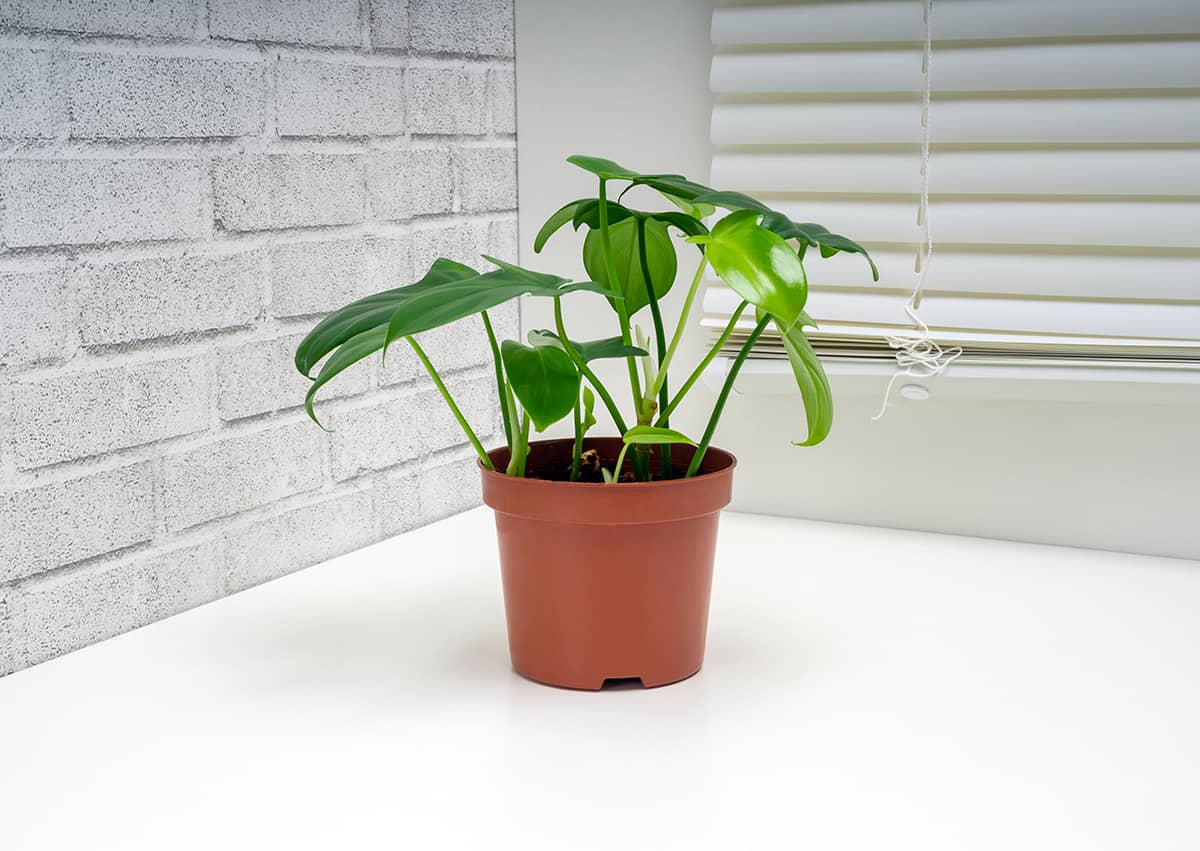
The Philodendron Cordatum is both an epilithic and epiphytic plant. This means it doesn’t send roots into the soil; and instead, it grows on the surface of other plants, trees, and rocks. It is endemic to the coastal region near Rio de Janeiro and São Paulo, which means this is the only place in the world where it grows natively.
In its natural habitat, the Philodendron Cordatum is found growing in abundance across rocky ground and at the base of other plants along a small strip of coastal rainforest. The plants grow under the cover of taller plants and trees and therefore aren’t accustomed to receiving direct sunlight or high levels of light.
For a Philodendron Cordatum houseplant, moderate levels of indirect light will be best, as this will most closely mimic the light in its natural environment.
Soil
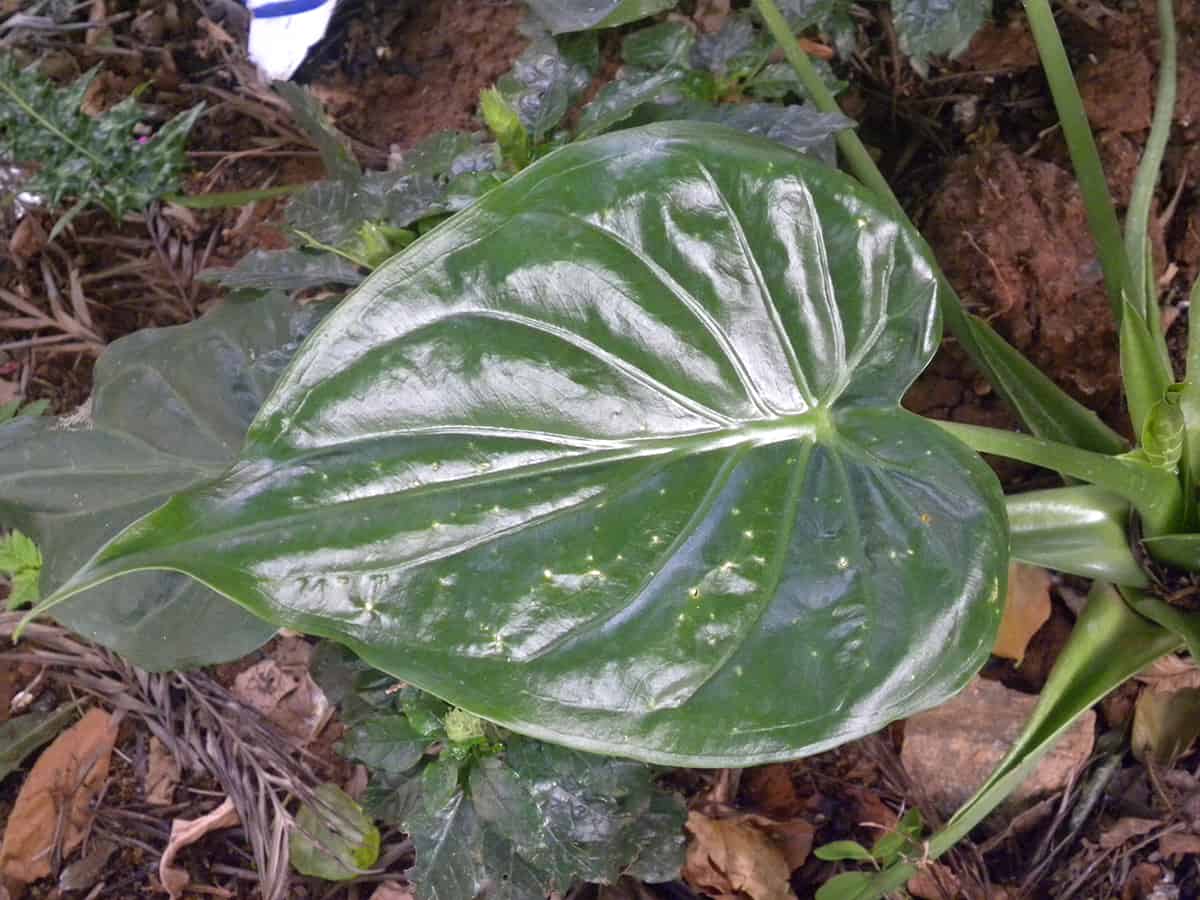
As an epilithic and epiphytic plant, the Philodendron Cordatum does not require soil to send roots into; however, it can grow in soil. If you are growing this Philodendron as a houseplant in soil, use a soil mix that has a heavy proportion of sand or perlite.
Dense soil or poorly draining soil will not be appropriate for this plant. Like other epiphytic houseplants, you could also grow the Philodendron Cordatum on a board covered with moist sphagnum moss.
Water
Epilithic and epiphytic plants are able to absorb moisture through their leaves, stems, aerial roots, and regular roots. If you are growing this plant in soil, then the soil should be kept moist but not wet; however, if you are growing the plant without soil, then you’ll need to make sure there is enough moisture in the air to meet the plant’s water needs. Keep the Philodendron Cordatum in a bathroom, as this will be the most humid room in a home, allowing the foliage of the plant to take in the moisture from the air.
Temperature
As a native plant of Brazil, the Philodendron Cordatum prefers hot climates. However, a specimen of this plant was kept in the Marie Selby Botanical Gardens in Sarasota, FL, during the 1970s and 1980s, where it was exposed to temperatures as low as 24°F in 1983 and survived with no adverse effects.
This shows that the Philodendron Cordatum is hardier than many other species of Philodendron and can be grown outside in USDA hardiness zones 9- 12. As a lover of warm temperatures, the Philodendron Cordatum is an ideal houseplant. If you are comfortable with the temperature of your home, then this houseplant will be comfortable too.
Humidity
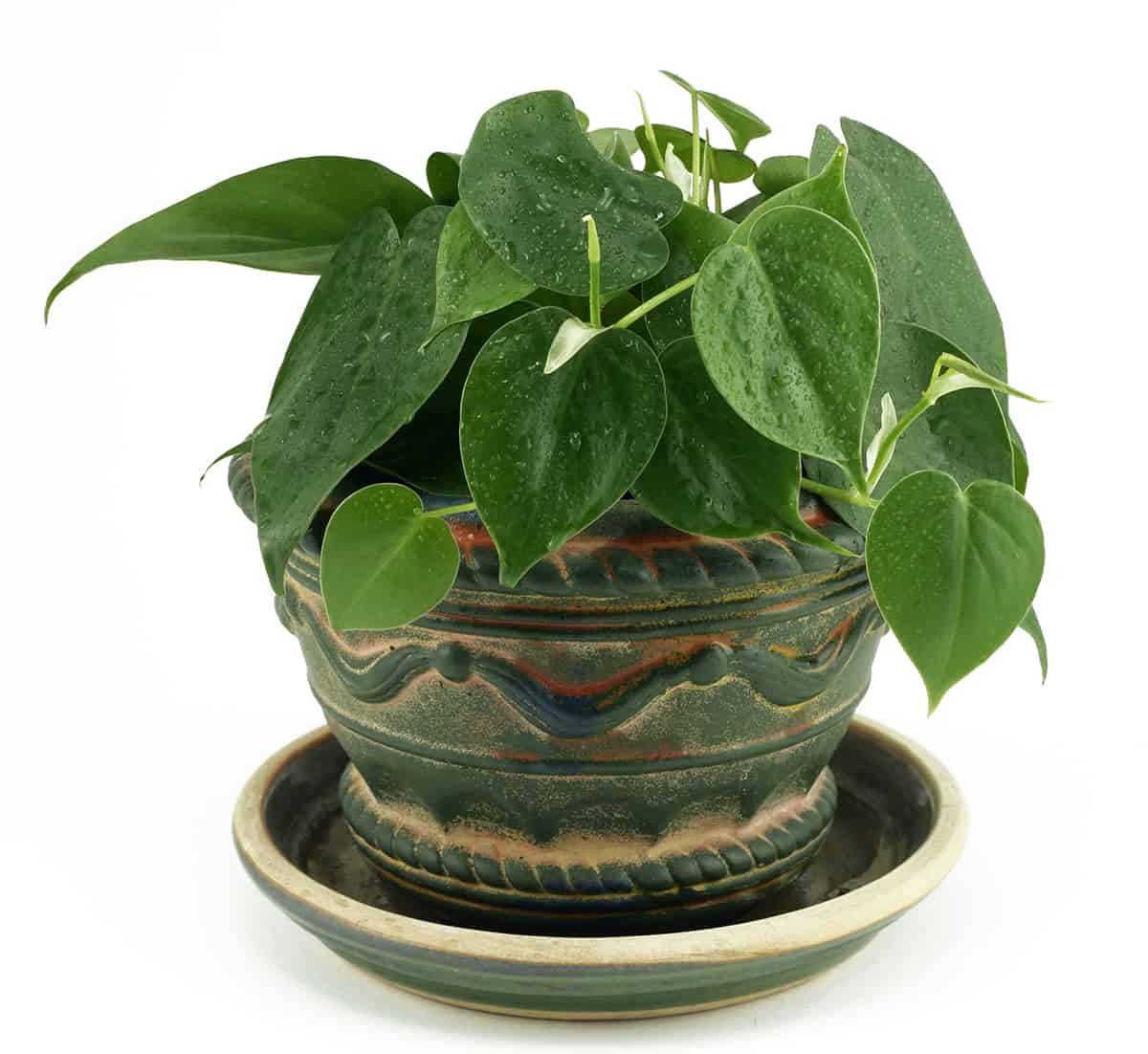
The Philodendron Cordatum thrives in humid environments. You should make all efforts to ensure the air around this plant is consistently moist in order for it to thrive. The best place in a home for the Philodendron Cordatum is the bathroom, where the air generally contains more moisture as a result of baths and showers being taken.
A kitchen windowsill near the faucet is also a good option. If the plant is not being kept in a humid room, it should be spritzed daily with water, kept on a humidity pebble tray, or situated in a space with an electric humidifier.
Fertilizer
This plant does not need fertilizer, but when kept as a houseplant, you can add small amounts of liquid fertilizer to your water when watering the plant through spring and summer.
Common Philodendron Cordatum FAQs
How long does a Philodendron Cordatum live for?
The lifespan of this plant will depend on its care conditions. In its native habitat, it is believed to be able to survive for many decades, potentially up to 100 years old, while as a houseplant, it is more likely to live for a maximum of 20 years in ideal conditions.
Can Philodendron Cordatum live outside?
The Philodendron Cordatum lives outside in its natural habitat, where it enjoys humid air, warm temperatures, and dappled light. If you’re able to replicate these conditions in your garden, you can grow this Philodendron outside as a specimen plant. In order for this plant to survive outside all year round, your climate should fall into the USDA hardiness zones 9- 12. If not, you would need to overwinter the plant inside to protect it from frost.
Are Philodendron Cordatum endangered?
The Philodendron Cordatum plant is officially rated as ‘near threatened’, which means it is potentially at risk of being endangered. The plant is endemic to a small strip of land close to the coast of Rio de Janeiro in Brazil, and these rainforests are consistently under the threat of being developed by builders.
Within its native range, the plant grows plentifully, and thankfully it is protected within the grounds of the conservation areas Parque Estadual da Serra do Mar and Reserva Biológica do Tinguá.
Is Philodendron Cordatum the same as Philodendron Hederaceum?
These two species of Philodendron are commonly mistaken for each other, with many online care guides incorrectly using the two botanical names interchangeably. The Philodendron Hederaceum is a very common houseplant, if not the most widely grown type of Philodendron houseplant across the world.
Meanwhile, the Philodendron Cordatum is extremely rare as a houseplant and, in its native environment, is considered to be a threatened species. The confusion arises from the fact that both plants are commonly known as ‘heart-leaf philodendron’. The Philodendron Hederaceum has distinctly heart-shaped leaves which grow on a vine, while the Philodendron Cordatum has very large, heavily veined heart-shaped leaves.
Many types of Philodendrons also have heart-shaped leaves; however, the reason these two particular species get mistaken for each other is the fact that ‘cordatum’ translates from Latin to mean ‘heart-shaped.’ As the Philodendron Hederaceum is most widely known as the heart-leaf philodendron, many growers have assumed that these two plants are the same species when in fact, they are completely different.
Aside from being very different in terms of looks, these plants grow in different ways, and they require different levels of care. They are also native to different regions of Brazil.
